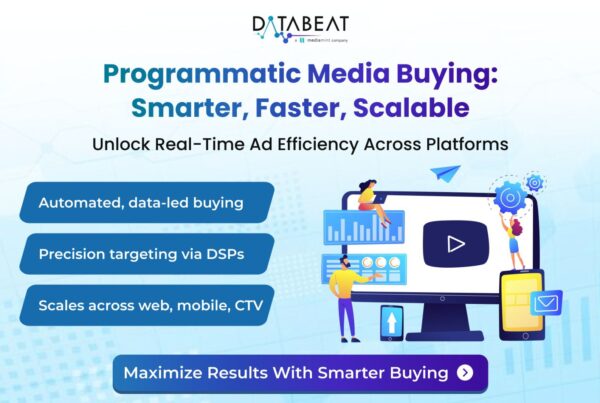
Here’s what happened
- New guidelines for Instream and Outstream player
- Tackled CTV limitation for user engagement
- Introduced new ad format (Companion ads)
Introduction
In September 2022, the Interactive Advertising Bureau (IAB) released new guidelines for Digital In-Stream Video and Connected TV (CTV) Ad Formats. These guidelines were introduced to accommodate the increasing use of CTV products in the video ad landscape. The guidelines came into effect on June 1st, 2023.
The way digital video content is consumed has evolved significantly in recent years, with viewers watching across various screens, including smartphones, tablets, desktops, laptops, and internet-connected TVs. Traditional TV has transformed into a collection of subscription-based “channels,” blurring the lines between TV and handheld devices. This shift has resulted in a substantial increase in video demand within the industry.
According to IAB’s “2022 Video Ad Spend & 2023 Outlook: Defining the Next Generation” report, digital video advertising spending increased by 21% in 2022, reaching $47.1 billion. It is projected to rise by an additional 17% to $55.2 billion in 2023.
Digital Video In-Stream
In-Stream Video Ads are video ads that play before, during, or after the requested streaming content. They are commonly used to monetize the content delivered by the publisher. The new IAB guidelines specifically address digital video in-stream ads and provide technical distinctions between in-stream and out-stream ads to ensure proper identification.
Discover how missing key Ad slots can results in lost revenue opportunities.
Below are the specification needed for an instream and outstream video ads:
- To be considered in-stream (pre-roll, mid-roll, and post-roll), video placements/impressions must have the sound turned on by default at the start.
- When player loads with default sound off must be indicated as out-stream placements in OpenRTB v2.5.
With these specifications in place we expect the following :
For Advertisers
As the distinction between what is considered an instream and outstream player is becoming more clear, advertisers will have more transparency on the video inventory, including iab ad sizes and classifications.
For Publishers
While this may initially be seen as a setback for publishers, as inventory once classified as instream is now considered outstream, there is a silver lining. Publishers can anticipate that their instream inventory will be valued more highly.
Connected TV
Connected TV (CTV) has been instrumental in driving this growth in the video industry. With the shift of broadcast and cable TV to online platforms. Despite these advancements, interactivity on CTV still faces certain limitations. In terms of interactivity, CTV has traditionally offered limited options. However, this is changing, as viewers increasingly interact with content on their TVs using remotes, game controllers, and smartphones.
Some of the options for CTV engagement include
- QR codes that create shoppable ads
- ‘Click’ with remote to select which ad to play
- Signal engagement with options to skip the intro, and ad, or advance to the next episode
- Use remote to ‘Explore more’
Ad Formats
The IAB guidelines defined ad formats to enhance the digital video advertising experience:

Linear video ads: These are formatted ads that interrupt streaming video content, similar to TV commercials. They can be played before (pre-roll), during (mid-roll), or after (post-roll) the streaming content. Linear ads can include a companion ad or interactive components.
Nonlinear video ads: Typically served as overlays on top of the video content, these ads were traditionally simple images but can now include video or animated media, especially in CTV. Nonlinear ads run concurrently with the streaming content, allowing users to view the ad without interruption. They can be delivered as text, static images, interactive rich media, or video overlays. They may also be accompanied by companion ads.
Picture-In-Picture ads: These nonlinear video overlays are used in CTV, allowing users to watch a video in a small window while navigating between apps or viewing content. An example is the ‘Double Box’ format, where both an advertisement and content are played simultaneously in a split-screen.
Companion ads: Served alongside linear or nonlinear ads, companion ads can take the form of text, static image display ads, rich media, or skins that wrap around the video player. They run alongside or surround the video player, ensuring continuous visibility of the sponsor throughout the streaming video experience. However, companion ads, except for end cards, are not available on CTV platforms.
Overall, the IAB’s new guidelines for instream vs outstream, CTV, and Video Ad Formats aim to provide advertisers with standardized practices and technical requirements for digital video advertising. By accounting for the growing use of CTV and introducing new ad formats, the guidelines help advertisers effectively reach and engage audiences across various screens while maintaining a positive user experience. The guidelines also clarify iab ad sizes to ensure consistency across platforms.









